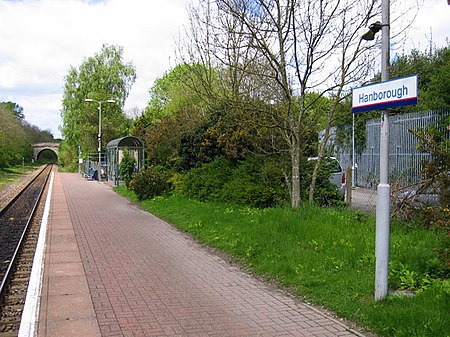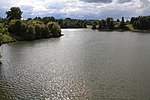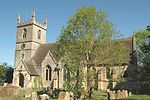Hanborough railway station

Hanborough railway station is a railway station in the village of Long Hanborough in Oxfordshire, England, serving the village and surrounding district. As a result of the Cotswold Line being singled the former up platform is the only one now in use for both up and down trains. It is served by Great Western Railway trains between London Paddington and Worcester Shrub Hill. It is also the nearest station to the towns of Woodstock and Witney. There is a passenger-operated ticket machine (card payments only; not cash) at the entrance to the station platform. The station has two car parks, which between them provide 241 car spaces. However, on most weekdays the number of passengers parking at Hanborough exceeds the number of spaces available.Oxford Bus Museum is just east of the station, in the former goods yard.
Excerpt from the Wikipedia article Hanborough railway station (License: CC BY-SA 3.0, Authors, Images).Hanborough railway station
Main Road, West Oxfordshire Hanborough
Geographical coordinates (GPS) Address Website External links Nearby Places Show on map
Geographical coordinates (GPS)
| Latitude | Longitude |
|---|---|
| N 51.825194444444 ° | E -1.3724111111111 ° |
Address
Hanborough
Main Road
OX29 8GF West Oxfordshire, Hanborough
England, United Kingdom
Open on Google Maps








